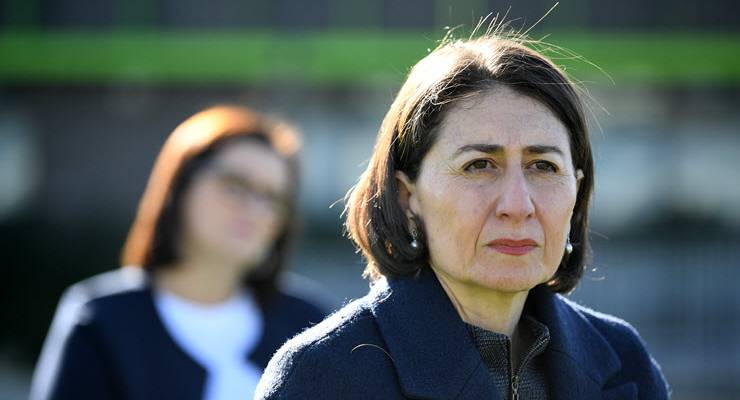
Australia has strived for a long time to have 50% representation of men and women in government. A recent report has found that women hold 48.5% of all positions on governance boards. While this a positive step, and the highest it’s ever been in Australia’s history, it doesn’t tell the whole story.
Stuffing women into lower-level positions to fill quotas does little to advance gender equality — and, as this year’s budget shows, can lead to pretty poor outcomes.
Crikey takes a look at how many women hold the top ministerial positions around Australia of party leader, leader of the upper house, treasurer, finance minister, education minister, and health minister.
Federal
Liberal Party 0%: Women hold none of the top positions in the federal government, with men hogging the major roles. (There is of course Foreign Minister Marise Payne but we are focussing on key domestic portfolios.)
(Opposition) Labor Party 40%: For Labor, women hold two out of five of the senior roles, with Katy Gallagher in finance and Tanya Plibersek in education.
NSW
Liberal Party 33%: Of six top positions in the Liberal party, two are held by women, including Premier Gladys Berejiklian.
(Opposition) Labor Party 20%: Just one woman, Jodi McKay, holds one of the five top shadow ministry positions in NSW.
Victoria
Labor Party 20%: Following the resignation of health minister Jenny Mikakos over the Victoria hotel quarantine debacle, Labor has just one woman in a senior position — leader of the house — with men holding the rest.
(Opposition) Liberal Party 60%: Three women sit in positions of shadow treasurer, shadow health minister, and shadow education minister, with men holding the other two spots.
SA
Liberal Party 0% / (Opposition) Labor Party 0%: South Australia leads the way for the least amount of gender equality with no women in top spots in either party.
Tasmania
Liberal Party 16%: Just one woman from Tasmania’s Liberal Party, Sarah Courtney holds one of the top positions as health minister.
(Opposition) Labor Party 50%: Of just four positions — with no minister for finance and no leader of the house — women hold half.
WA
Labor Party 60%: Portfolios of health and education are held by women.
(Opposition) Liberal Party 20%: Shadow education minister Donna Faragher holds one of five of the top positions.
Queensland
Labor Party 60%: Led by Annastacia Palaszczuk, Queensland Labor also has a female leader of the house and education minister.
(Opposition) Liberal Party 50%: Led by Deborah Frecklington, men hold treasury and education portfolios while Rossyln Bates is the health minister.
ACT
Labor Party 40%: Just three people hold five roles — one of them being Yvette Berry, Minister for Finance and Education.
(Opposition) Liberal Party 50%: Once again, portfolios of health and education are held by women, with no house leader and no finance minister.
NT
Labor Party 50%: Health and education portfolios are again held by women, with no house leader and no finance minister.
(Opposition) Liberal Party 60%: Two women and one man hold the top roles, with Lia Finocchiaro as the leader of the opposition and shadow treasurer, and Jo Hersey as shadow education minister.
Overall, how’s Australia doing?
Tallying the total positions across state and federal levels, things look up. In conservative parties, women hold just 45% of all top positions, while for alternate parties, women come out on top, holding 61% — or 16 of the 26 available positions.
Co-director of the 50/50 by 2030 Foundation Professor Kim Rubenstein told Crikey the gender ratios were a step in the right direction and testament to affirmative action and some party’s commitment to gender equality.
“We need to share the load, share the benefits, and share the power,” she said.
“We need to think about what needs to be done to embed equality in the political sphere to enable people with lived experience, which policies impact on, to be real contributors to these policies.”
When it comes to the Liberal Party’s federal representation of women, Rubenstein said she hopes people let their concerns be known — especially following this year’s budget
“Any government is going to be responsive to the political consequences of their decisions. You would hope the leadership would be more responsible, and the electorate would share their disappointment around policies which don’t take into account gender equity.”








So Queensland not part of Australia any more ? Works for me 🙂
Not to mention South Australia. Amend article please, and address editing issues.
I see Qld is now part of Australia. For a moment there I thought Sir Joh had risen from the grave and we’d declared ourselves a separate country !
It hasn’t been fixed on the Crikey Daily page, yet though.
A somewhat arbitrary analysis. Are you trying to tell us that Defence and Foreign Affairs are no longer senior Commonwealth portfolios?
What happens in SA?
I’m sorry this is a pretty arbitrary approach – on what basis have you decided that health and education are ‘the most important’ portfolios – ahead of say, justice minister or Attorney-General? Isn’t total representation across Cabinet the better measure?
where is Queensland?
Look behind you, about 20 years.